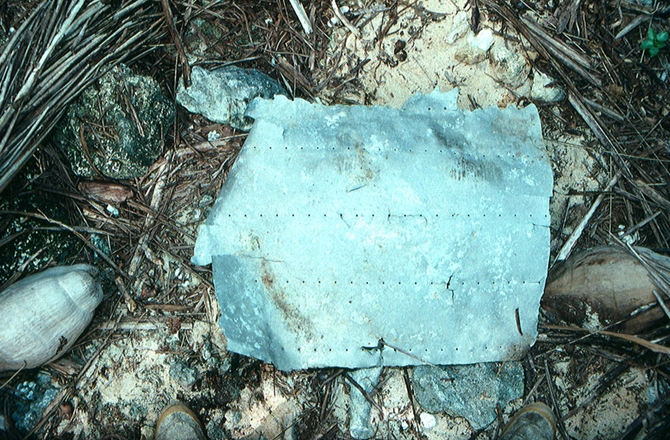
The most widely-believed contemporary explanation of her disappearance states that Earhart and her co-pilot, Fred Noonan, ran out of fuel near their resupply point at Howland Island and crashed into the water. However a small sheet of aluminum discovered at a tiny uninhabited atoll called Nikumaroro—some 350 miles Southeast of Howland—that was discovered in 1991, has been positively identified as one of the Electra's components.
Specifically it was a patch for the plane's navigational window and was installed in Miami during one of Earhart's layovers. We know this because a photo of the Electra sporting its new patch appeared on the front page of the June 1, 1937 Miami Herald—one day before Earhart's disappearance.
By comparing the recovered 19- x 23-inch patch—dubbed Artifact 2-2-V-1 by investigators—against the image, researchers are nearly certain the two are a match. "The Miami Patch was an expedient field repair," Ric Gillespie, executive director of TIGHAR (The International Group for Historic Aircraft Recovery), "Its complex fingerprint of dimensions, proportions, materials and rivet patterns was as unique to Earhart's Electra as a fingerprint is to an individual."
This confirmation has huge implications to the Earhart saga. It would indicate that Earhart and Noonan did not sink to watery graves but rather, more likely, they crash landed the Electra on the flat coral reefs surrounding Nikumaroro atoll and—either one or both, maybe neither—spent the rest of their lives as castaways on that dead speck of dry land in the middle of the ocean with nary a volley ball to keep them company.

 RSS Feed
RSS Feed